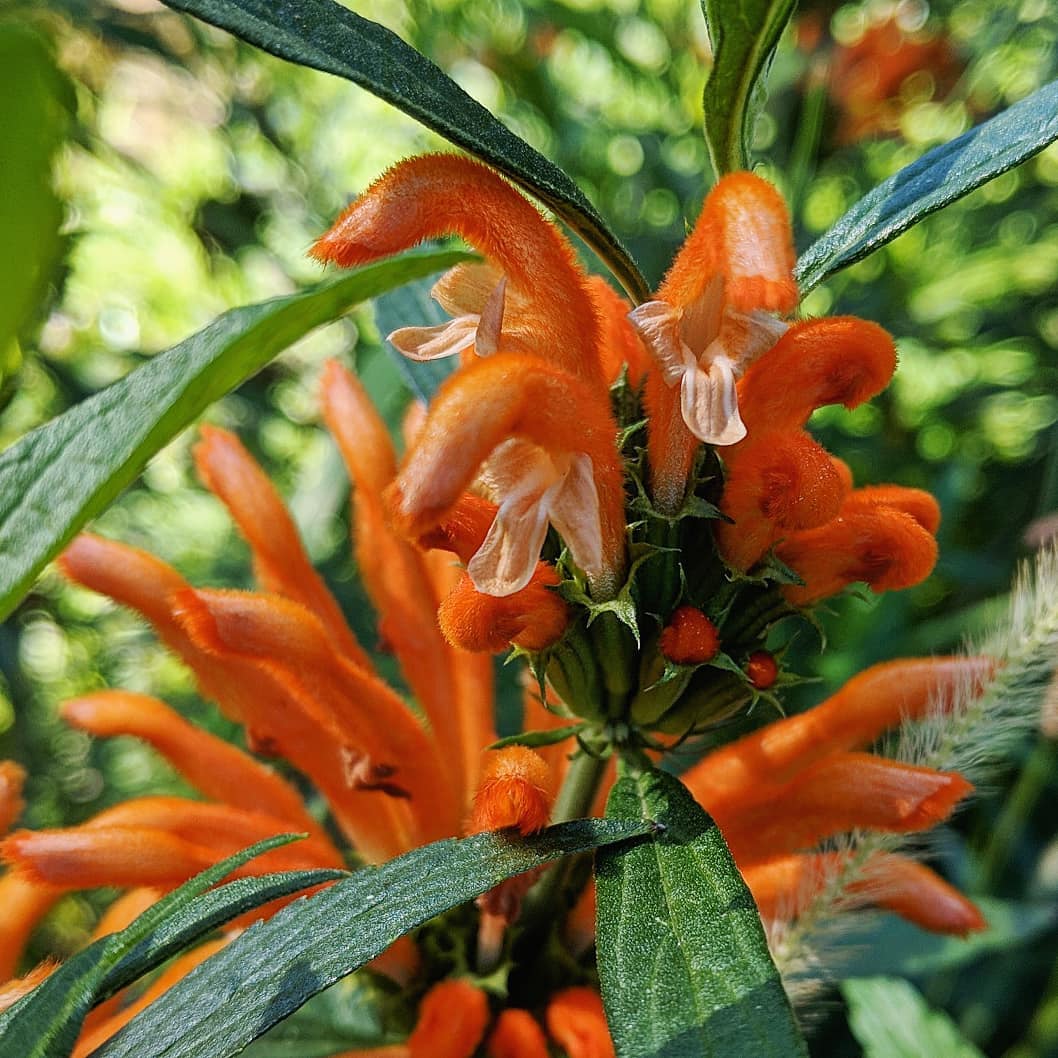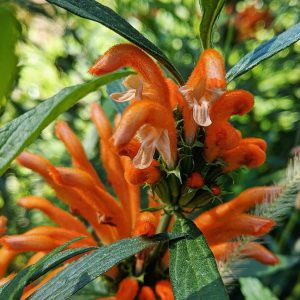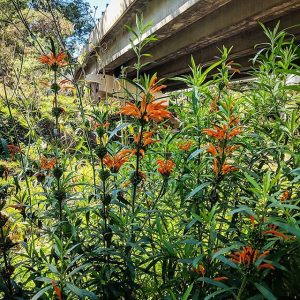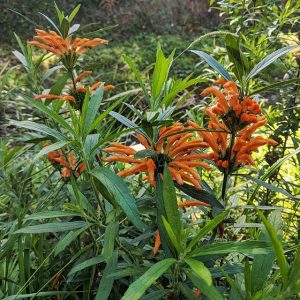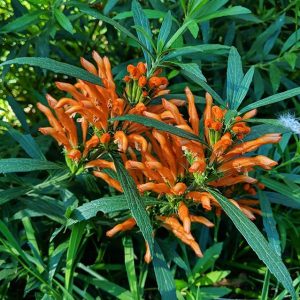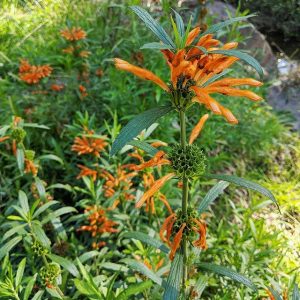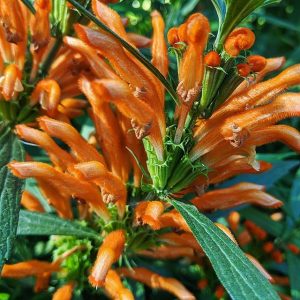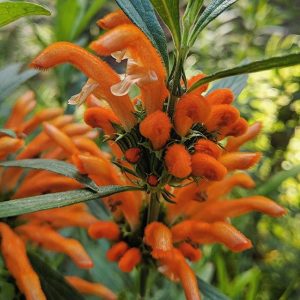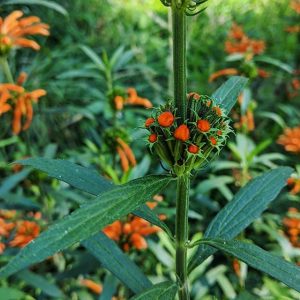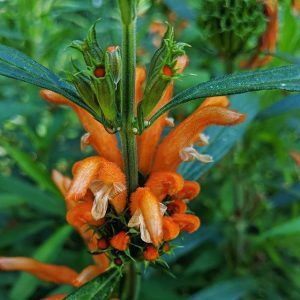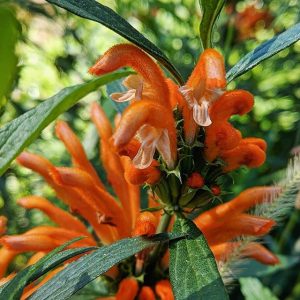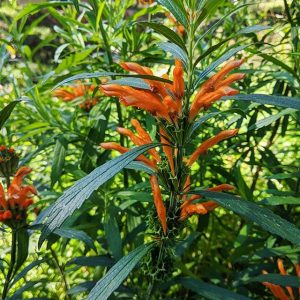Lion’s Tail (Leonotis leonurus), a spectacular Southern African member of the mint family.
Brought to Australia as a garden ornamental (the species was available from Melbourne nursery J. and J. Rule from at least 1855), Lion’s Tail is now recorded regularly along the south-east coast of NSW, from Sydney south to Eden. It has occasionally been recorded around the rest of coastal Australia, and there are also scattered records of the plant in NZ, Mediterranean Europe and the Americas.
In Victoria, Lion’s Tail was recorded naturalised in the mid-2000s in Coastal Banksia woodland at Lakes Entrance in East Gippsland. Collection records also exist from Melbourne’s fluorescent coast (Brighton, Elwood), and from Mont Albert, although it is unclear if these collections (from 1906, 1983 and 1964) represent naturalised or cultivated material. The species grows as a perennial in frost-free areas, and as an annual in more temperate climates; its present distribution in Australia (and globally) is suggestive that it does quite poorly as an annual and is dependent on root transport or rare successes in seed set and dispersal in order to spread. The flowers are adapted to the curved bills of African sunbirds, and despite our exceptional complement of nectar-eaters may only be pollinated rarely if at all by Australian birds.
The photographed plants were present as a small patch, presumably recently rafted, on an infrastructural margin to Mullum Mullum Creek in Ringwood, beneath the overpasses of the Ringwood Bypass. The declining number of frost days in Victoria is suggestive that, despite its reproductive limitations, we are likely to see more of this plant in coastal and riparian circumstances in the years ahead.
View Original Post on Instagram
Search for information about Leonotis leonurus in the Flora of Victoria
View information and occurrences of Leonotis leonurus on the Atlas of Living Australia
